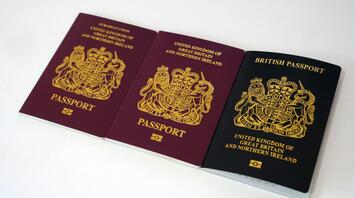Passport Colors: What They Mean

In recent years, UK passports have switched from red to blue. But did you know passport colors actually have meanings?
In 2020, the UK government reverted to issuing blue passports, replacing the red ones used for the past 30 years as part of the European Union. This change is not merely aesthetic but also has deeper significance.
Passports come in various colors, most commonly blue, red, green, or black. Each color represents something specific, and the choice is up to the issuing country.
An Instagram post by @weroad explains that the color of your passport signifies two main things. First, it conveys a theme or feeling typically associated with that color. Second, it indicates the level of mobility the passport holder has, meaning how freely they can travel without needing visas.
Blue passports, like the new British ones, are also used by countries such as Canada, the USA, and Brazil. They symbolize "freedom and stability" and are often high mobility, allowing for easier travel.
Red passports, including the burgundy ones used by Brits in the EU, are found in countries like China, Russia, and Japan. This color is associated with "power and authority" and generally indicates high mobility.
Green passports are common in Middle Eastern and African countries, and also used in places like Pakistan and Mexico. Black passports are used by some African nations and New Zealand.
The color choice is influenced by the issuing country's government and can be based on historical precedents, national identity, regional agreements, and practical considerations. While most passport colors follow these general rules, there are exceptions. Some countries with "high mobility" colors face travel restrictions and vice versa.
Many people are surprised by these revelations, as they often don't consider the significance of passport colors. As one person noted, "Very interesting! Had never thought of this before."



















